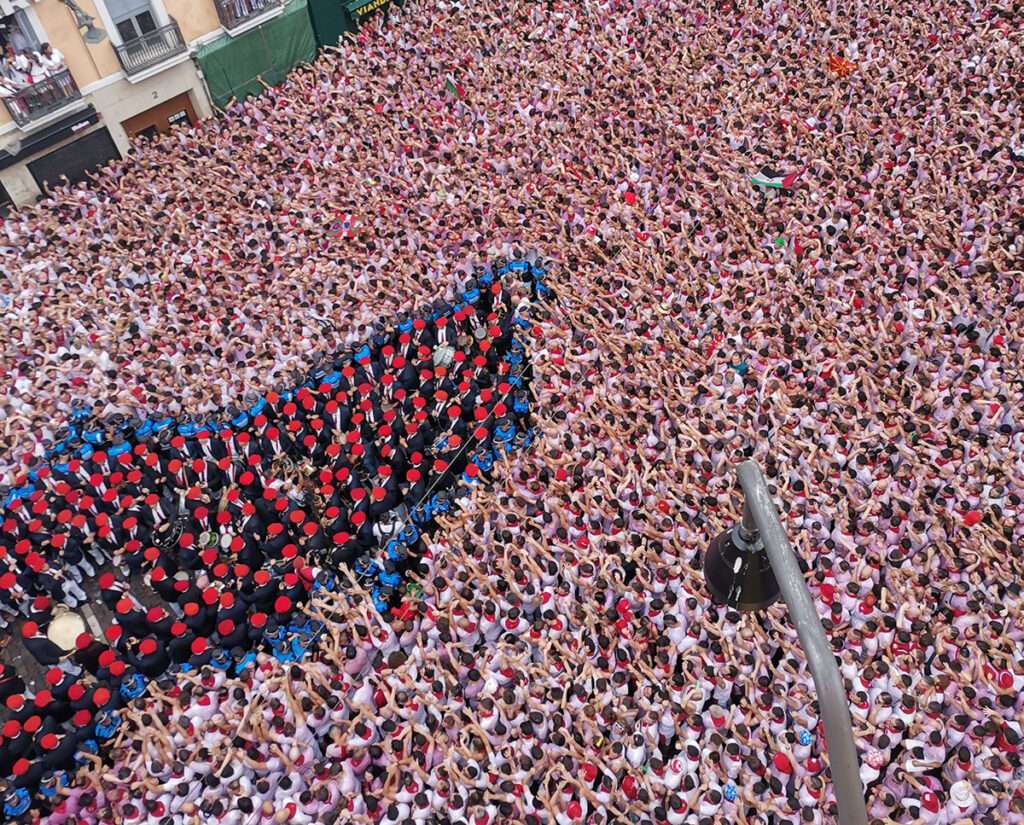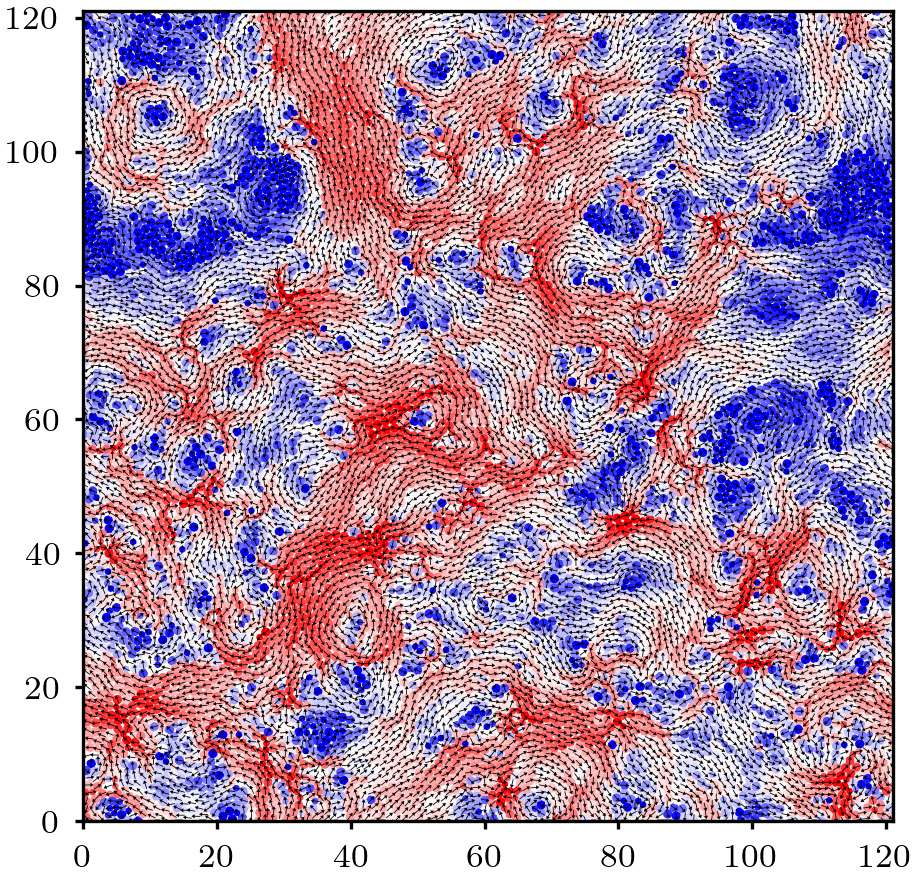Active Matter
Coordinators : Benjamin Guiselin and Juliane U. Klamser
Active matter refers to systems made up of numerous individual components or particles that consume energy to generate motion or mechanical work. These systems are driven out of equilibrium at the microscopic scale, as the particles continually convert energy into directed motion through mechanisms such as self-propulsion, self-rotation, and self-deformation. The interplay between particle-level activity and interactions in dense assemblies gives rise to emergent collective phenomena, including self-organization, pattern formation, and collective motion.
Natural examples of active particles range from molecular motors inside cells to entire organisms like bacteria, insects, and fish. Initially, the field of active matter aimed to uncover the physical principles guiding the self-organization of living systems. However, interest quickly expanded to synthetic systems, such as micro-robots and active colloids like Janus particles and Quincke rollers.
Understanding the collective phenomena in active matter remains a formidable challenge due to the complexity of dense systems combined with their out-of-equilibrium nature. Our research focuses on unraveling how these behaviors depend on external parameters (e.g., density, temperature) and the microscopic details of the active particles (e.g., locomotion mechanisms). To achieve this, we employ the framework of statistical physics, utilizing both analytical and numerical tools. Below, we present two illustrative examples of our research activities.
Human-crowds dynamics :
Massive crowd gatherings create some of the most dangerous environments, and predicting their motion remains challenging. In collaboration with researchers from ENS Lyon, Institut Lumière Matière, and the University of Navarra, some of us analyzed the dynamics of thousands of tightly packed individuals during the opening ceremony of the San Fermín festival in Pamplona, Spain.

Experimental observations indicate that at extreme densities, crowds exhibit spontaneous, self-sustained oscillatory flows.
By combining the laws of mechanics with symmetry principles, we developed a robust predictive model of dense crowds inferred from these experiments, shedding light on this emergent chiral dynamics. This study reveals that the self-organization of crowds into macroscopic oscillators stems from transverse frictional forces between the crowd and the ground.
Chaotic flows in dense active matter :
A challenge in active matter is that collective phenomena often depend on the details of individual particle dynamics.

However, chaotic fluid-like motion, resembling turbulence, has been observed in diverse experimental systems like bacterial and sperm suspensions. This inspired us to explore this phenomenon in minimal models of isotropic, self-propelled particles.
These particles move in a fixed direction for a characteristic time before changing direction. We found that turbulent-like flows spontaneously emerge due to a competition between persistent active forces and crowding at high densities.
This is surprising because the self-propulsion direction of neighboring particles is uncorrelated, yet collective flows still emerge spontaneously.